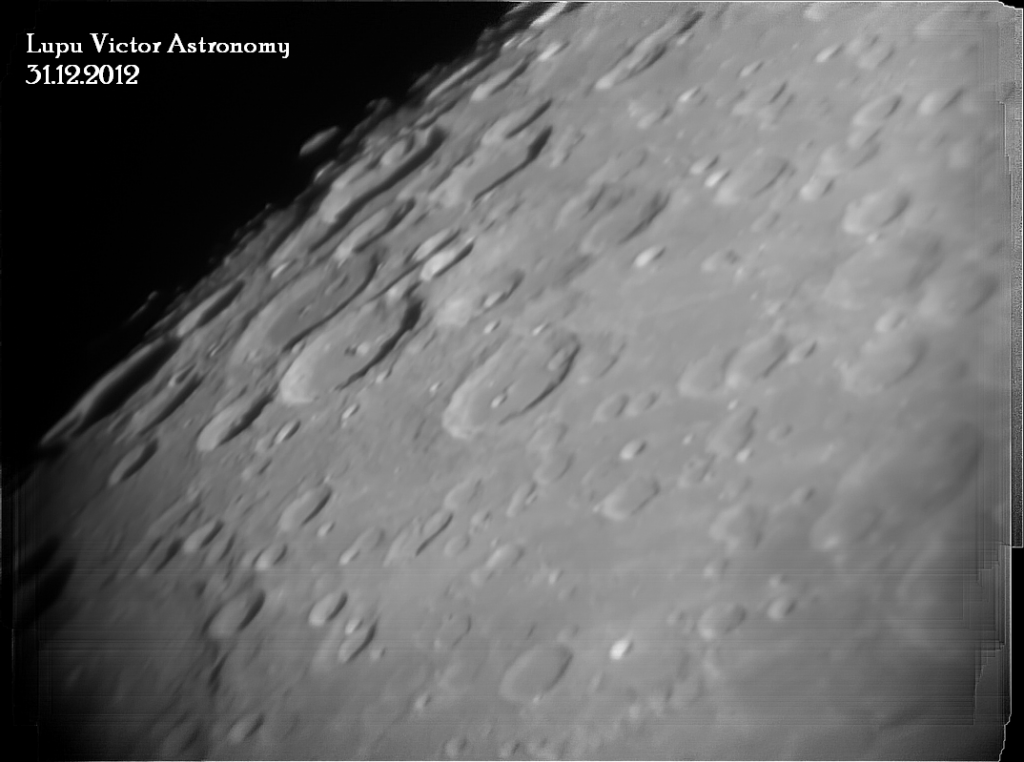 |
| 364 frames at 83, gaussian% in Registax |
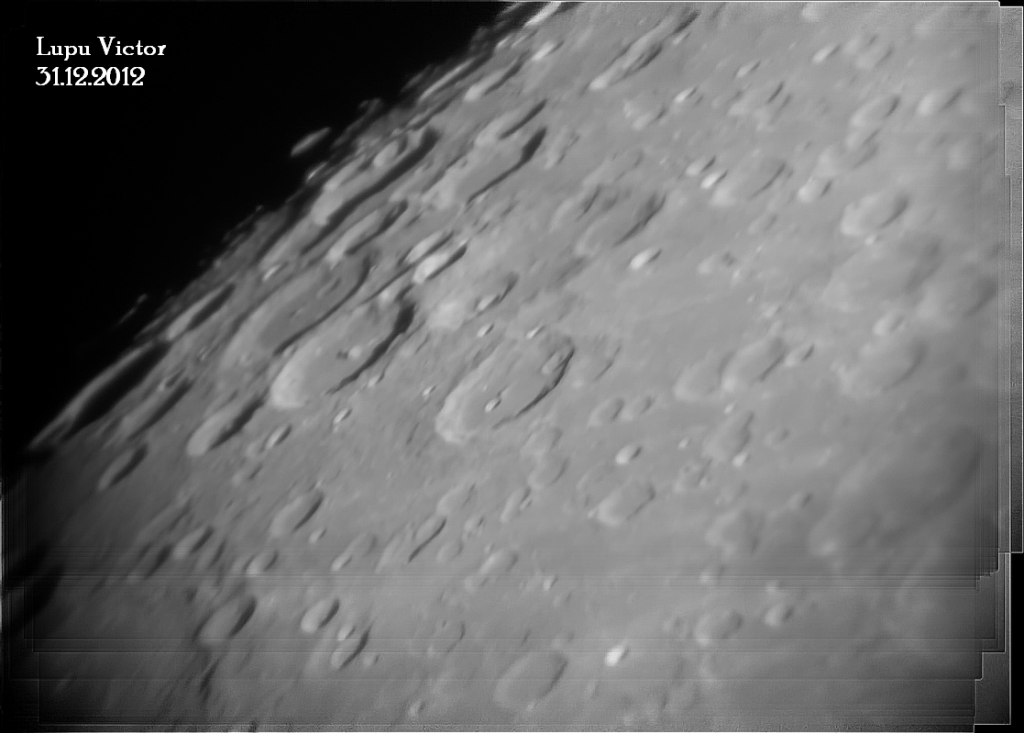 |
| 72 frames 90% gaussian in Registax |
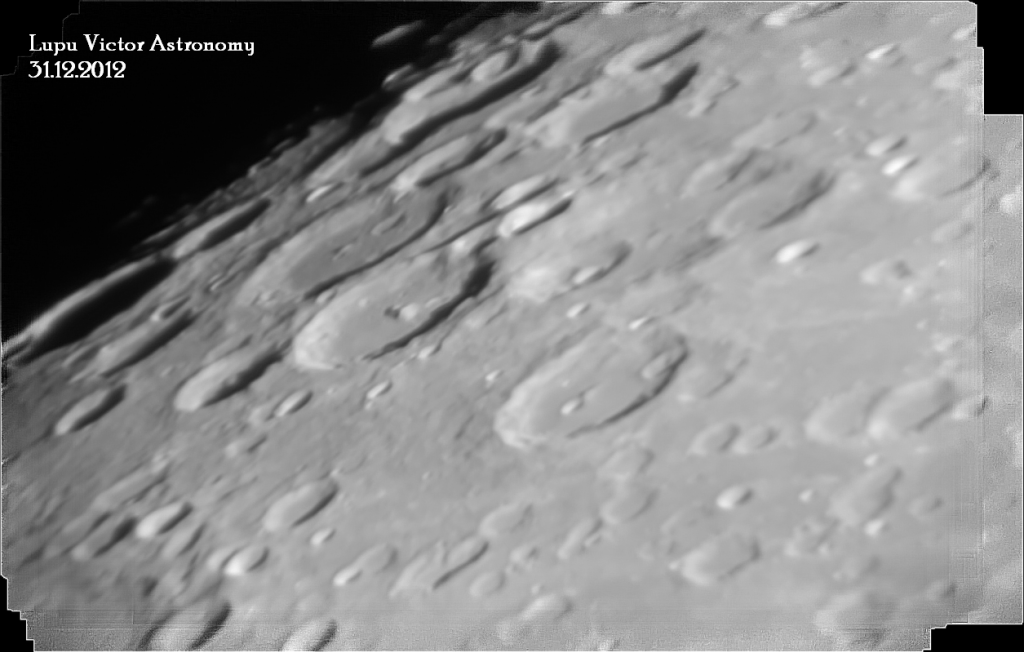 |
| 952 frames at 82%, gaussian in Registax |
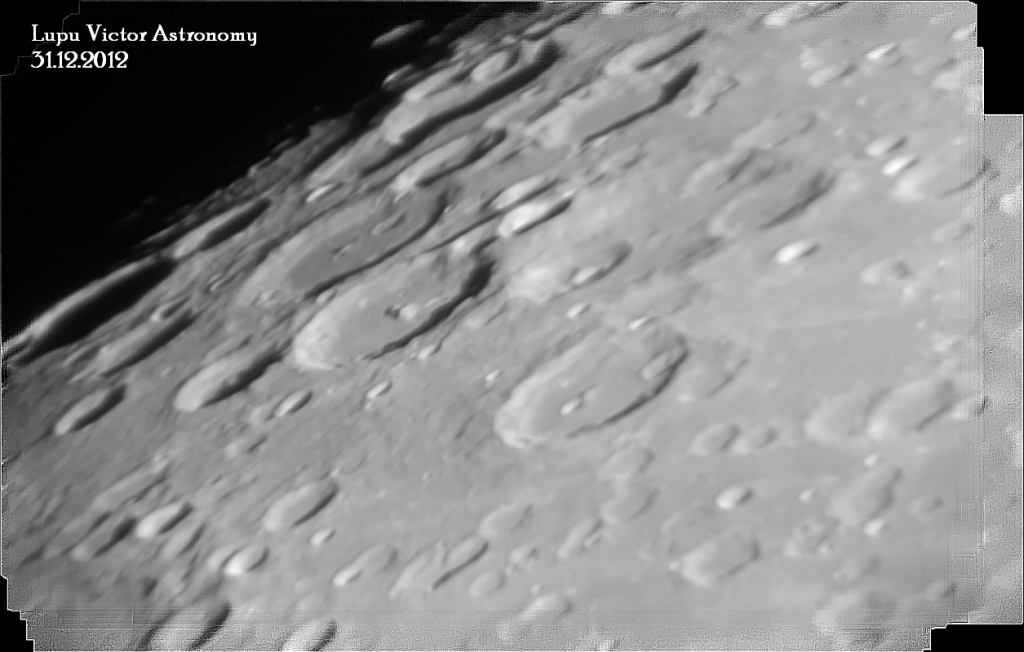 |
| 952 frames at 82% in Registax |
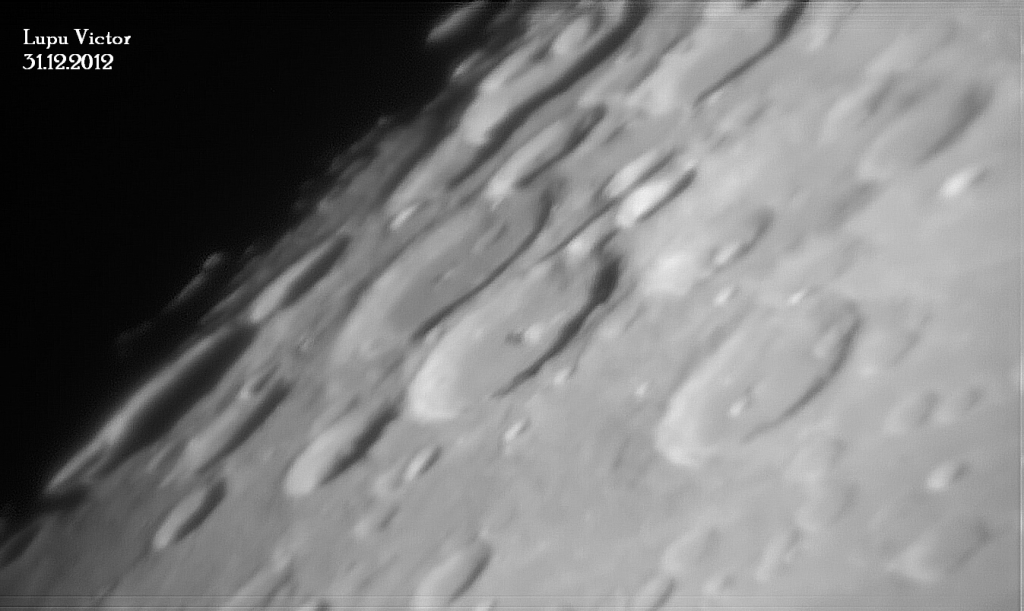 |
| 59 frames at 85%, in Registax |
 |
| 59 frames at 85%, gaussian in Registax |
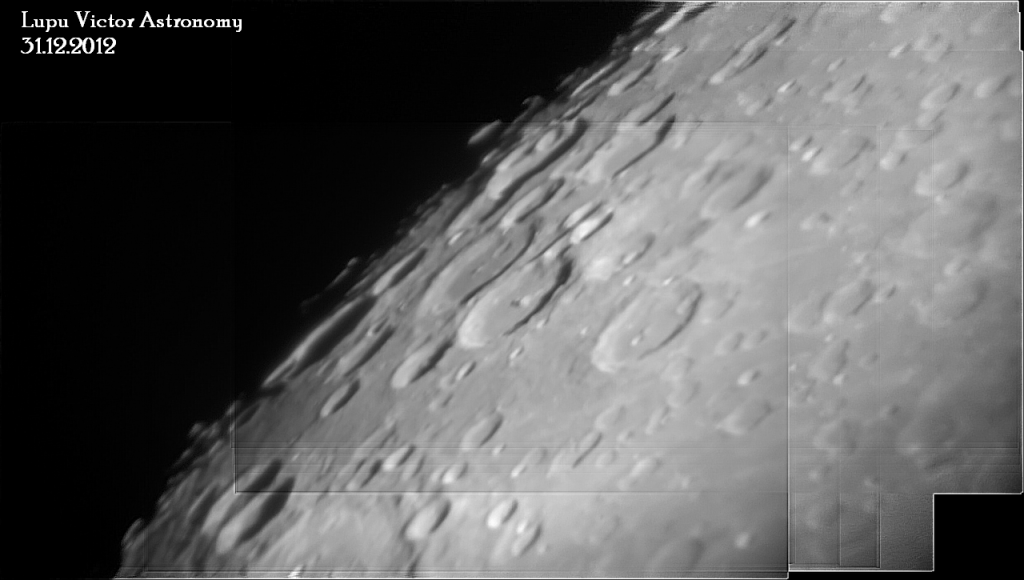 |
| 59 frames at 85% in Registax |
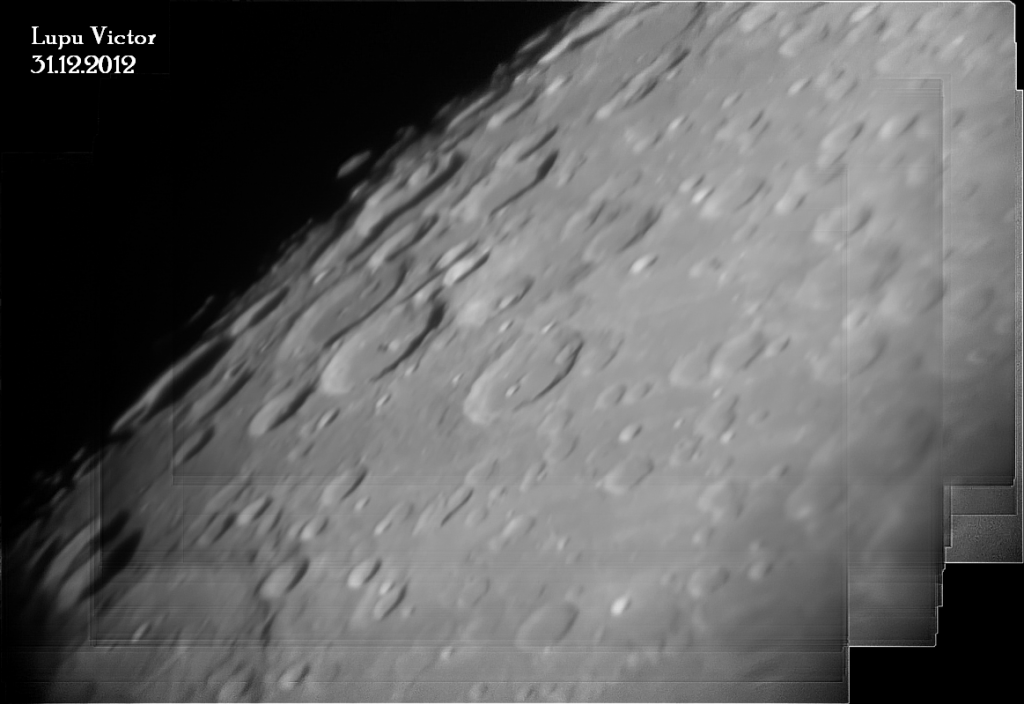 |
| 270 frames at 83% in Registax |
 |
| 952 frames at 82% in Registax |
These photos are the clearest images of the south area I ever made. In them, all craters are oval, the more outward you look, due to their position on the Moon.
There are many craters in this area, a common feature to the southern region of the Moon. The biggest in size, are neighboring craters Vlacq and Rosenberger, which are similar both in shape and size.
Notice the beautiful mountain in the center of the crater Vlacq (89 km), and that of Rosenberger (96 km) which is more dull. Another large crater that stands out in these images is Hommel (120 km). On the edges of the north-east and north-west are two small craters, Hommel A and C. In Hommel A, is observed another crater, and smaller, called Hommel V.
North of Hommel (Note that the images are upside down as seen through the telescope, and for better observation of the crater), is Pitiscus (82 km).
Images are processings from Registax, of a video from which were taken a variety of shots, merged to form a single image.
Age of the Moon: 17 days
Phase: 93% (0% = New, 100% = full)
Distance: 394.960 km
Optics: Celestron C8-Newtonian telescope, 20mm Plossl, 2x Barlow
Mount: CG5 (EQ5) motorized
Camera: Sony CX130
Filter: no
Date: 31/12/2012
Location: Baia Mare, Romania
Processing: Registax, FastStone Image Viewer




 Wednesday, August 07, 2013
Wednesday, August 07, 2013
 Unknown
Unknown


 Posted in:
Posted in: 


0 comments:
Post a Comment